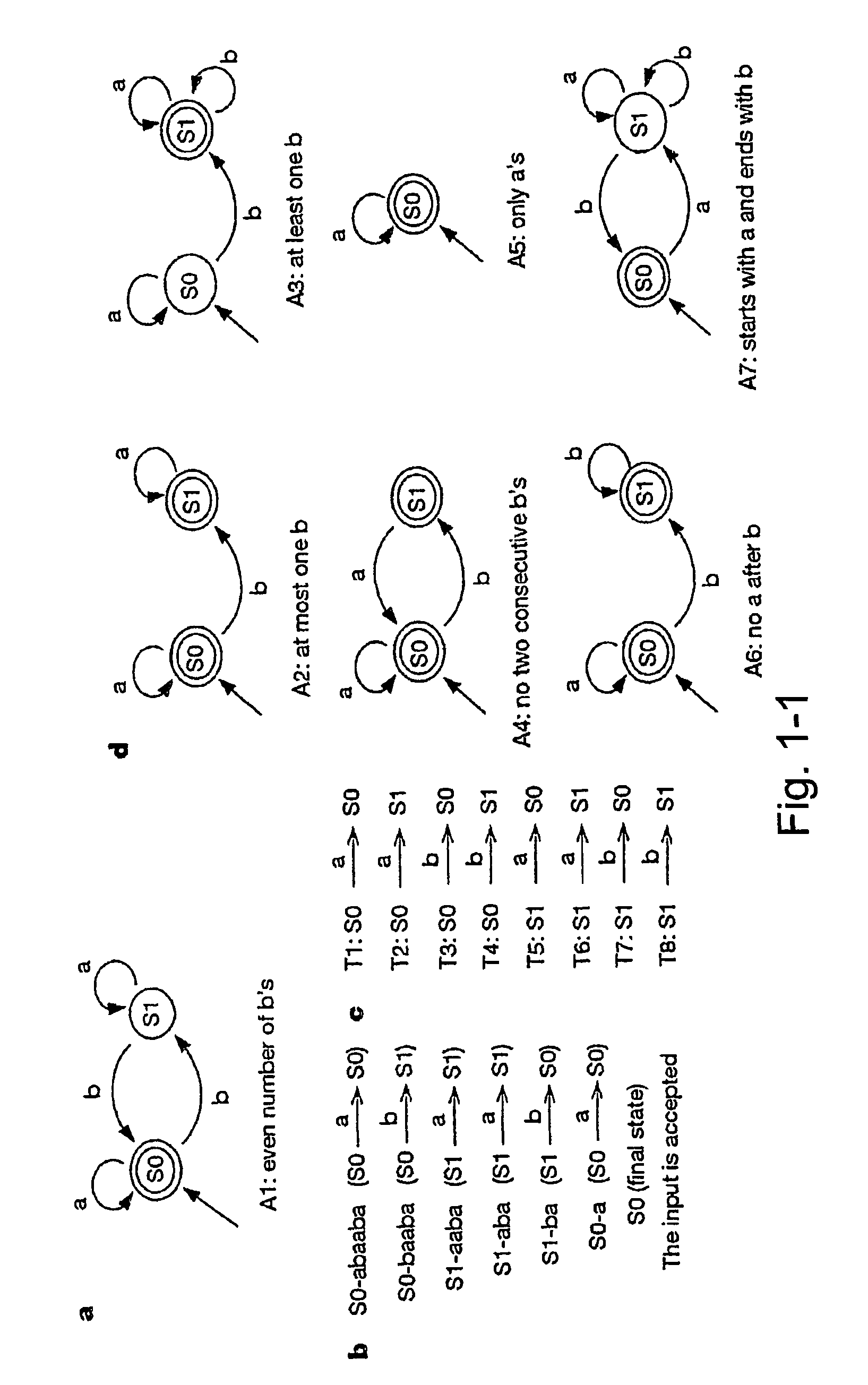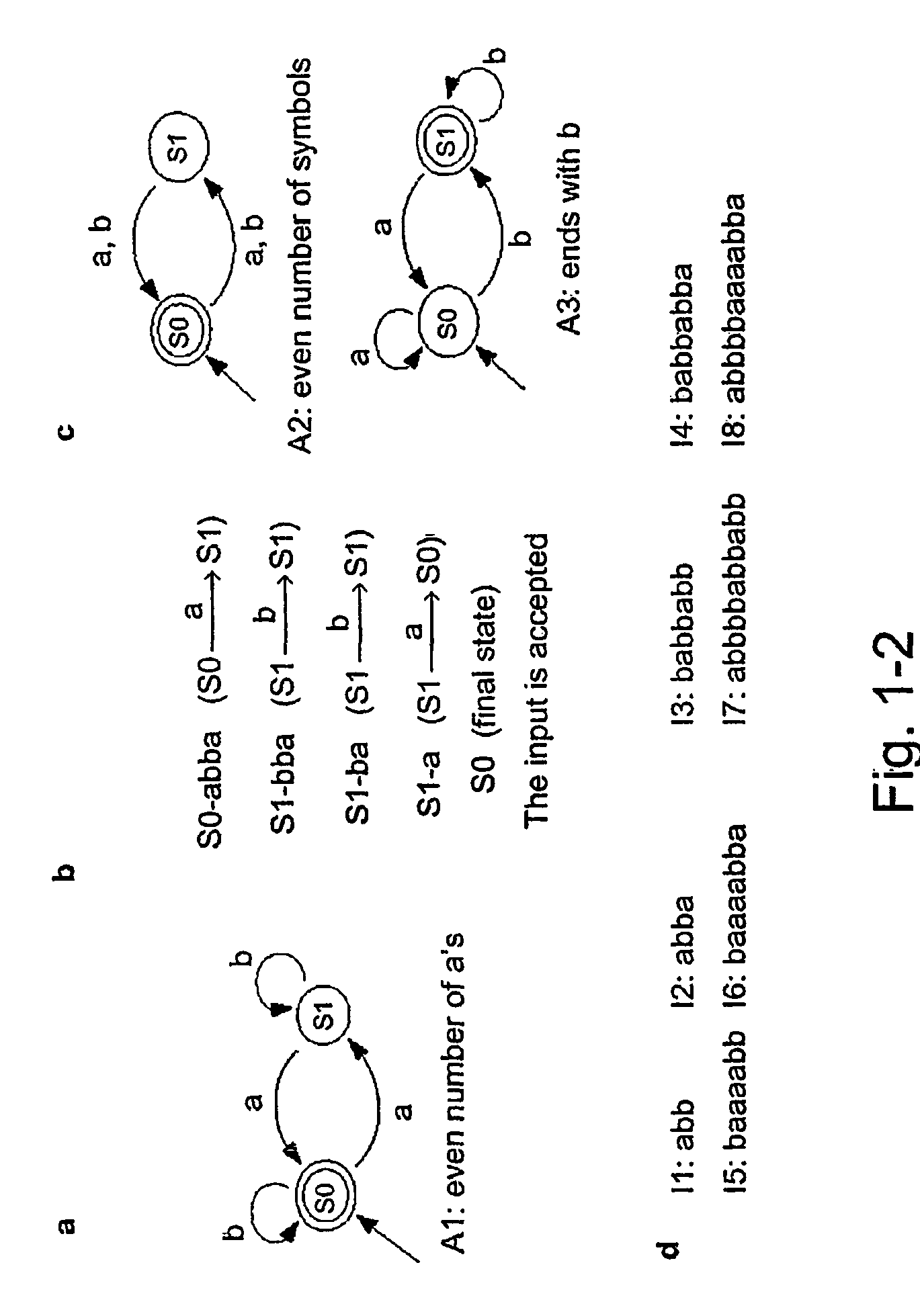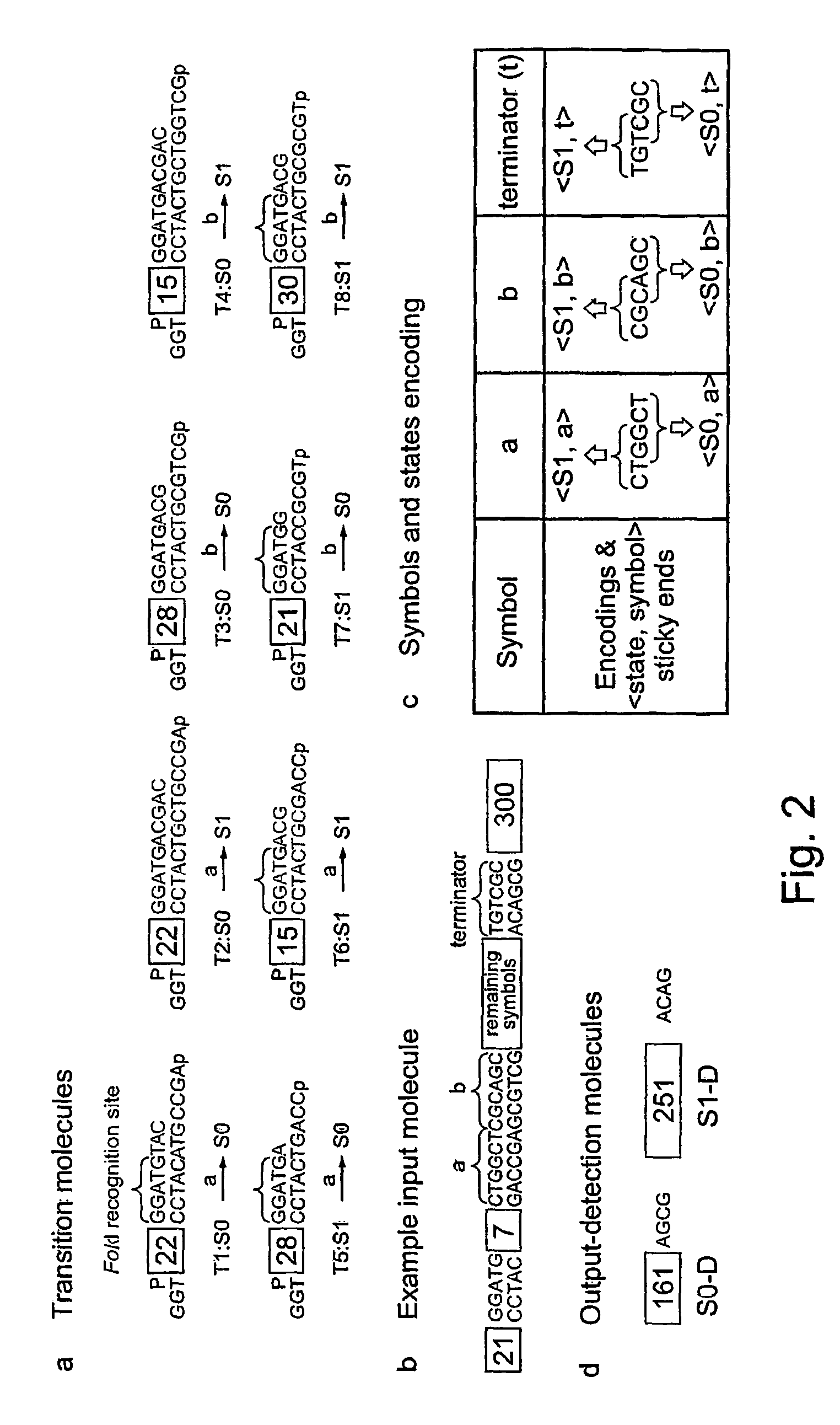Programmable and autonomous computing machine made of biomolecules
a biomolecule and computing machine technology, applied in computing models, biological models, instruments, etc., can solve the problems of steric hindrance, background art does not teach or suggest a suitable mechanism for providing power to molecular computers, background art does not teach or suggest such a biomolecular computing device, etc., to achieve the effect of reducing steric hindran
- Summary
- Abstract
- Description
- Claims
- Application Information
AI Technical Summary
Benefits of technology
Problems solved by technology
Method used
Image
Examples
example 1
Construction and Operation of Biomolecular Computing Machine
[0059]This Example describes an optional, illustrative, non-limiting implementation of a biomolecular automaton or computing machine according to the present invention, implemented with DNA molecules as the polymeric biomolecules. The logic diagram for this automaton is given in FIG. 1-1. The results indicate that the automaton according to the present invention is clearly operable, and provides expected and reproducible results from different exemplary inputs.
Methods
[0060]Synthetic DNA Double-stranded synthetic DNA molecules were prepared by annealing 2,000 pmol of commercially obtained deoxyoligonucleotides (Sigma-Genosys) in a final volume of 10 μl of 10 mM Tris-HCl buffer, pH 8.0, containing 1 mM EDTA and 50 mM NaCl. The annealing was performed by heating the solution to 94° C. followed by slow cooling. The formation of a duplex was confirmed by native PAGE (20%). The oligomers were 5′-phosphorylated and PAGE-purified b...
example 2
Validation of Biomolecular Computing Machine
[0070]The mechanism of operation of the automaton (biomolecular computing machine) of the present invention was validated by the results of three experiments: omission of single components, analysis of the intermediates, and measurement of computation fidelity. The results of these validation operations are shown in FIG. 4. First, A1 was run on ababaa, omitting a single reaction component at a time (FIG. 4a). No output reporters could be detected once an essential component was omitted except for the case of T6 removal, an incorrectness similar to the case of the A6-aba computation, since without wishing to be limited to a single hypothesis, apparently other transitions performed the role of T6 (with very low efficiency); a kind of error. In addition, omitting ligase did not seem to impair the formation of the output molecule, although without ligase the reporter could not be detected (see Example 3 below for more details).
[0071]In the sec...
example 3
Self-Powered Biomolecular Automata
[0073]This example describes experiments which demonstrate the operation of this exemplary embodiment of the molecular computing device according to the present invention, and in particular, its ability to fuel computations by using the input as energy.
[0074]A biomolecular computing machine was developed according to these preferred aspects of the present invention, and is shown with regard to FIG. 5. As above, double-stranded (ds) DNA molecules with sticky ends realize both the software (FIG. 5b) and the input (FIG. 5c) and the class IIS restriction enzyme FokI functions as the hardware (FIG. 5a).
[0075]Unlike the previous example, the core computational step (FIG. 5e) of the device according to the present invention preferably does not use energy-consuming ligase to bond the hybridized input molecule and software molecule. Rather, it utilizes a hitherto unknown capability of FokI to cleave DNA in the presence of a non-covalent hybridization complex...
PUM
| Property | Measurement | Unit |
|---|---|---|
| molar ratio | aaaaa | aaaaa |
| pH | aaaaa | aaaaa |
| volume | aaaaa | aaaaa |
Abstract
Description
Claims
Application Information
 Login to View More
Login to View More - R&D
- Intellectual Property
- Life Sciences
- Materials
- Tech Scout
- Unparalleled Data Quality
- Higher Quality Content
- 60% Fewer Hallucinations
Browse by: Latest US Patents, China's latest patents, Technical Efficacy Thesaurus, Application Domain, Technology Topic, Popular Technical Reports.
© 2025 PatSnap. All rights reserved.Legal|Privacy policy|Modern Slavery Act Transparency Statement|Sitemap|About US| Contact US: help@patsnap.com



